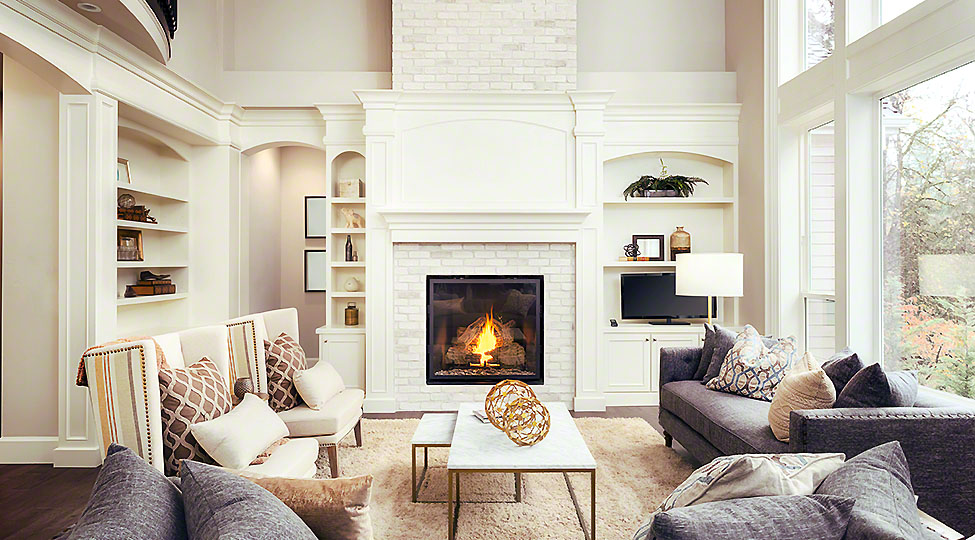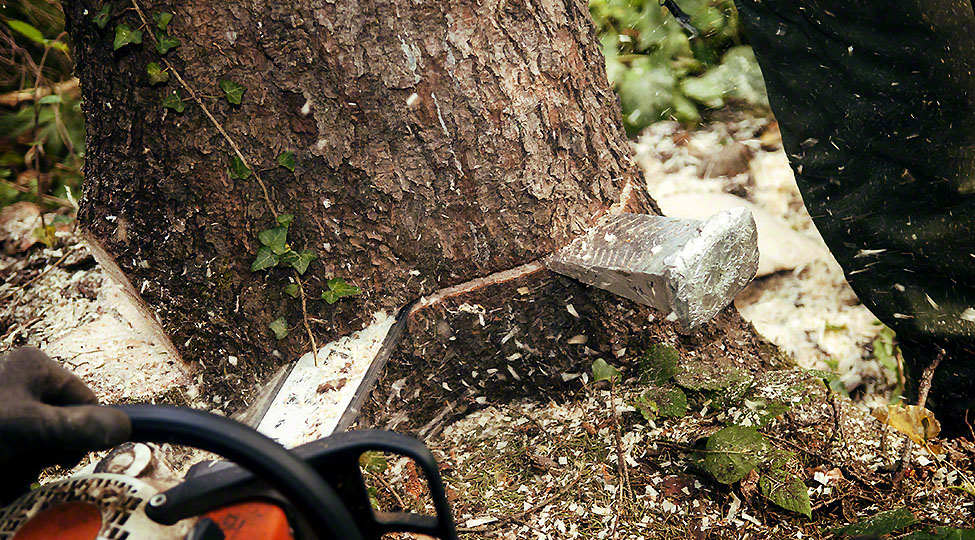Is your chimney wet? While you might think that it’s a leak, there might be other reasons that could be leading to condensation in your chimney. Following are the possible reasons that could lead to a condensed chimney. You may have to do a chimney inspection to determine the exact cause for which you may need the help of an expert.
Temperature Difference
The first and most obvious reason why your chimney might be condensing is the fact that the temperatures outside and inside the chimney are different. This is a very common problem to occur and it goes away once you fire up the chimney, literally. The mechanism behind the condensation is pretty straightforward. When the chimney is inoperable, water droplets from the outside can freeze on the interior walls of the chimney.
Once the chimney is fired up, the droplets, that are frozen, get blasted with a heated punch and they fizz up, causing condensation to occur on the walls of the chimney. Think of it like water beading on a glass, after it’s been sitting idle for too long.
Leaks In The Chimney
This reason can be the cause of recurring chimney condensation and if you don’t fix it, then it can affect the heating performance of the chimney altogether. Sometimes, there might be leaks in the root of the chimney that’s fused with the roof.
Usually, the structure is slanted and it prevents the water from settling on the roof for too long, but some water droplets can make their way inside the chimney and settle there. Once the chimney is fired, it can lead to reasonable condensation on the walls of the chimney and this can later trickle down to the fireplace.
The problem with this is that your fire, if it’s very weak, can get extinguished by the condensed droplets and if the leak is major, then there will be more condensation. It’s pretty straightforward.
It Doesn’t Have A Liner
Most people don’t even consider a chimney liner for their fireplace. A chimney liner has a lot of benefits. It not only insulates the chimney from the inside out, prompting your fire to be stronger and the heating performance to be spectacular, but it also prevents condensation. How, you ask? Well, the walls of the chimney being insulated by the liner, will allow the chimney to cool down periodically, rather than rapidly and this will lead to less condensation in the end.
Additionally, a chimney liner also amps up the heating performance, so your chimney will fire up and subsequently heat up super-fast, preventing drops of water from forming inside the chimney. It’s simple science if you think about it. Therefore, have a liner installed in your chimney by consulting chimney relining services Ellicott City.
There’s No Ventilation
Usually, chimneys are fixed on top of the roofs, and right under the roofs are the neglected attics. These spaces seldom have ventilation and this can cause moisture to build up rapidly. When there’s no way for the air to pass through, things can get stuffy and moist inside the chimney and it can cause condensation to occur on the exterior walls of the chimney.
If there are any cracks in the bricks or mortar of the chimney structure, then it will also cause the condensation to penetrate inside the chimney, hence leading the water down to the fireplace. This, over time, can cause a lot of issues with the heating as well as the general structure of the chimney.
If there’s too much condensation on the walls of the chimney, then there may come a time when it cracks to the point of collapse. That is a huge safety hazard. So, always ensure that your attic has ventilation otherwise the results will be detrimental.
Byproducts Are Causing Moisture
If you’re using a coal or gas-powered fireplace, then this might be an issue that causes extreme condensation and dampening of the chimney. When fossil fuels are burned, they form several byproducts. Hygroscopic salts are one of them. These salts, once produced, can deposit on the walls of the chimney. Sounds pretty harmless, right? Well, not exactly.
These salts attract moisture to an excessive degree. This can lead to a lot of dampening inside the chimney, especially where the salt deposits are. To combat this issue, you’ll need to have the salts removed first, then the entire interior of the chimney will be plastered and coated with a salt neutralizer. What this does is prevent the salt from depositing on the walls of the chimney.
Weather Is A General Issue
Rain brings moisture and dampening and that’s a fact. If you live in an area where there are a lot of heavy downpours, then condensation might be a problem for you. In spite of installing a chimney cap, some water droplets can find their way into the chimney and cause condensation.
This is bad because the chimney doesn’t get a chance to dry and the temperature difference, when the fireplace is lit, can cause extreme condensation on the chimney walls. The solution?
The best way to combat this issue is you keep the chimney running. This will keep the interior of the chimney dry and hot at all times and any drops of water will immediately vaporize. You can also waterproof your chimney to prevent this problem.
Chimney Isn’t Covered
This is also another reason why your chimney might be getting damp. A chimney cap is a must for a chimney, no matter what kind of weather conditions you live in. Sometimes, however, this chimney cap can either get toppled over, removed or it might simply get damaged. This can’t be noticed straight away, because you’re not inspecting the chimney as regularly.
Once water starts to pass through the chute, that’s when you’ll know that the chimney mouth is exposed. So, the best tip that you can follow, is to keep an eye on the chimney and the roof, especially when the days are too windy or rainy. Keeping the chimney covered will save the day.
Bricks Are Cracked
Chimneys are usually made out of bricks and mortar. However, these things aren’t the most invincible when it comes to durability. With changing weather, temperature, and other factors, the bricks of the chimney can get cracked and you know what entails after the fact.
Water can easily penetrate inside the chimney and if there’s a stark temperature difference, then you might want to say hello to condensation.
Damaged Flashing
Chimney flashing damage can often be mistaken for roof leaks. You’ll want to inspect your chimney closely. If there are stains on the base of the chimney, then it probably means that your chimney flashing is leaking. You should call in a professional because this needs some serious looking after.
After identifying the damage, the flashing will be repaired. A leaked chimney flashing can lead to moisture buildup inside the chimney and it is only a matter of time before condensation follows, so always keep your eyes peeled.
Conclusion
Condensation and moisture in a chimney can be troublesome. It might extinguish the fire and you won’t be able to warm up your space fast enough. So, whenever you see those tiny drops of water, it’s time to get down to business. This means, getting in touch with chimney contractors Columbia MD for an inspection.

